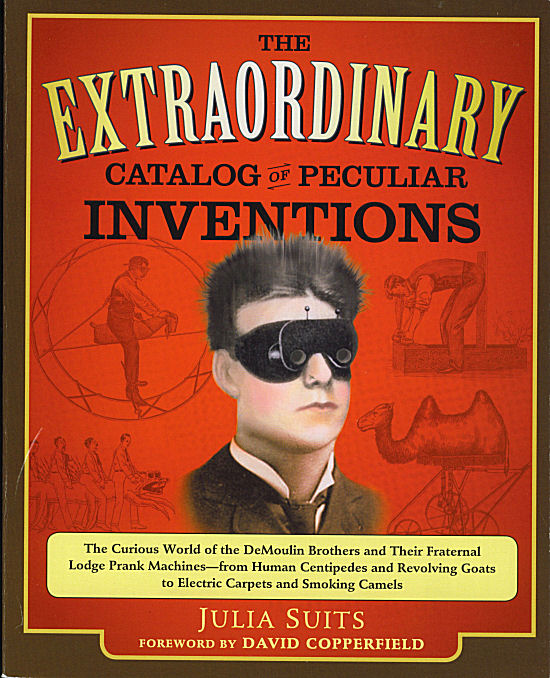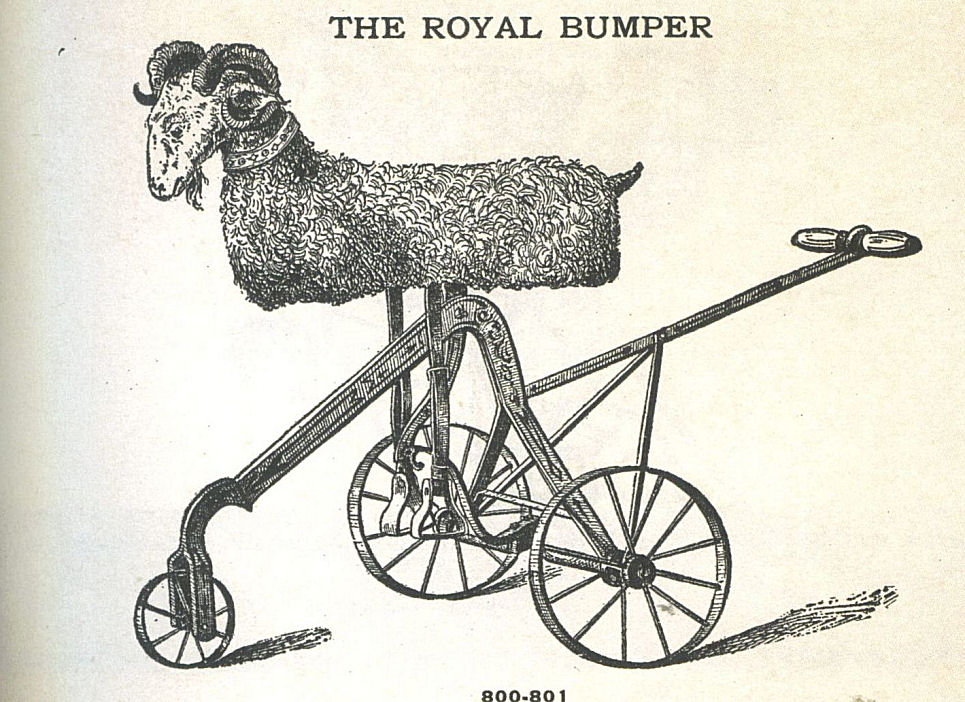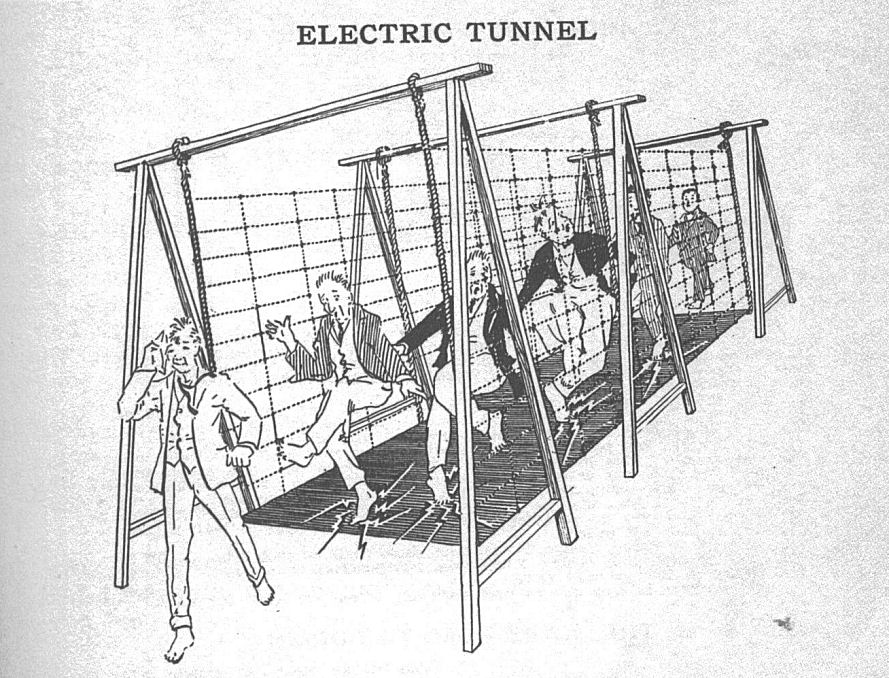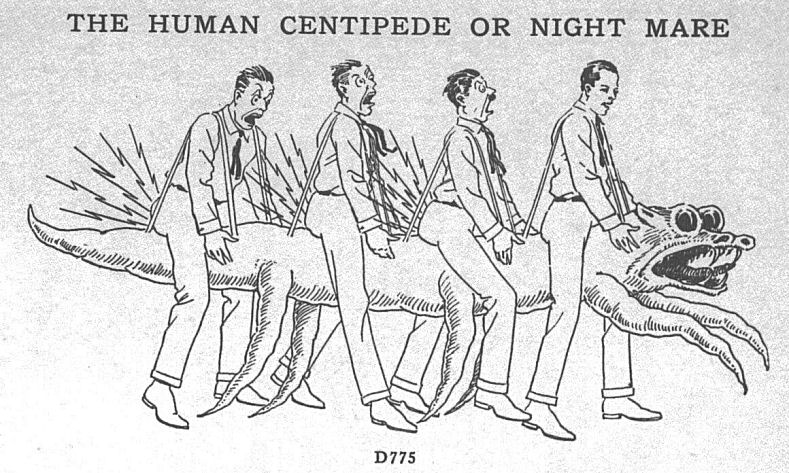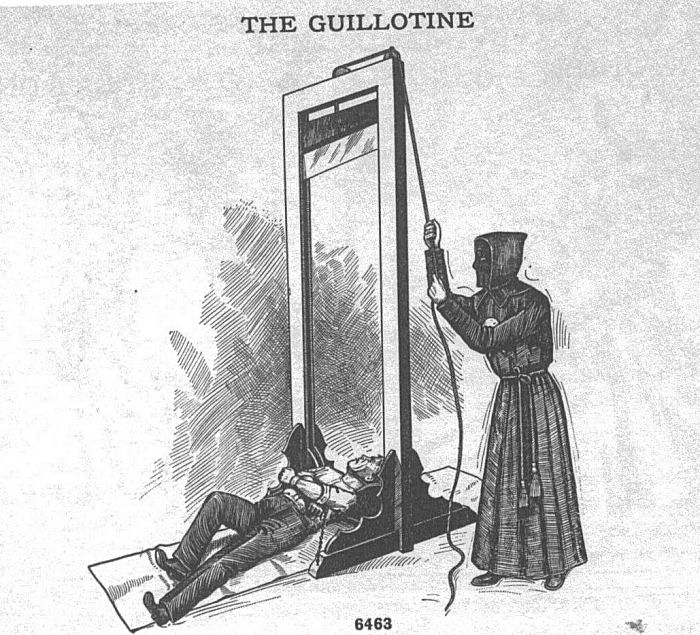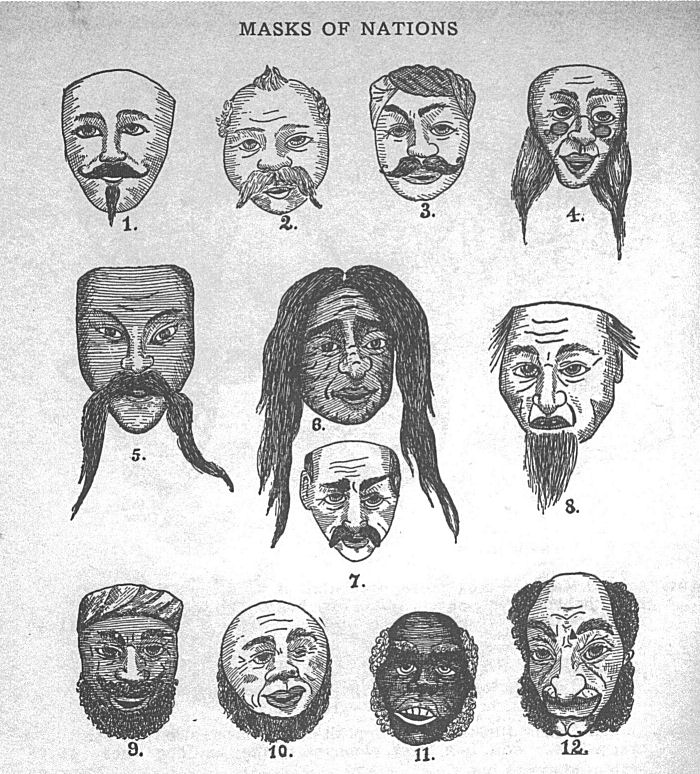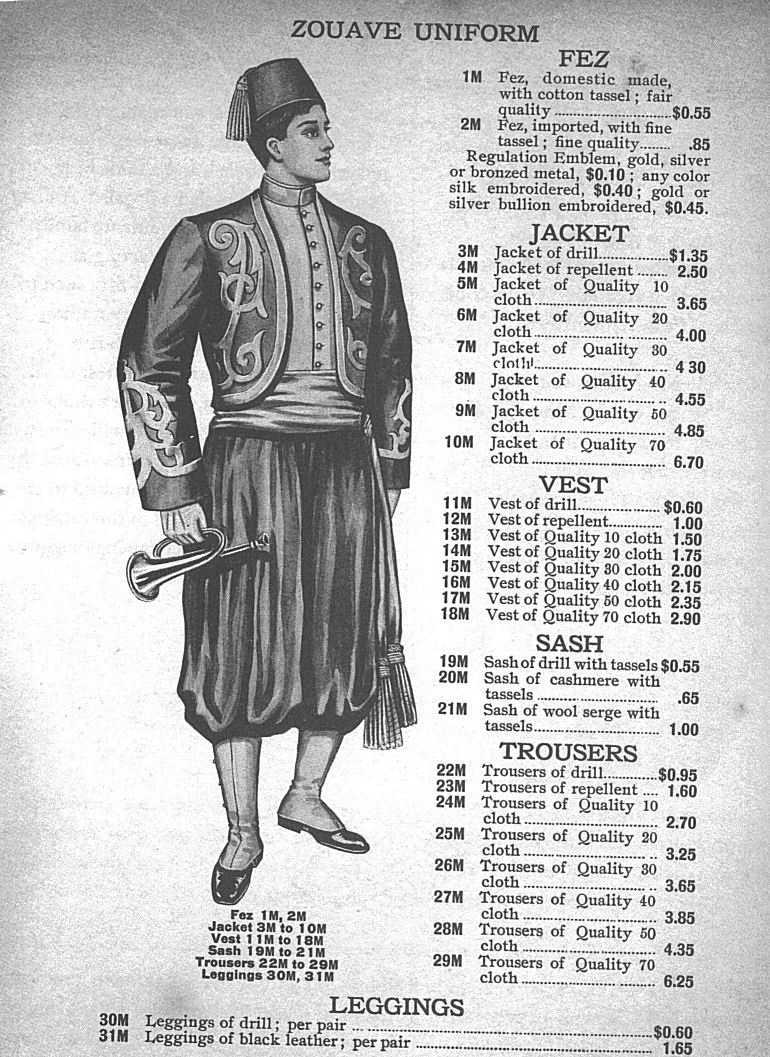Book Review: The Extraordinary Catalog of Peculiar Inventions
By Worshipful Brother Fred Milliken
Every once in awhile you come across a book that is so out of the ordinary, in the subject field that your are studying, that it intrigues your fancy. Such is the book that Julia Suits has written about fraternal society initiation equipment. And equipment in this context covers a lot of ground.
The title of Suits’ book is “The Extraordinary Catalog of Peculiar Inventions.” Suits further describes her work as “The Curious world of the DeMoulin Brothers and Their Fraternal Lodge Prank Machines – from Human Centipedes and Revolving Goats to Electronic Carpets and Smoking Camels.”
Now before all you stiff and proper Freemasons get your knickers in a twist, you will be happy to know that most of this “foolishness” was never sanctioned by Freemasonry or by the Odd Fellows either.
So if Freemasonry, by and large, was not using all this prank paraphernalia, who was? The most notable organizations who succumbed to the prank phase were:
Modern Woodmen of America (MWA)
Woodmen of the World (WOW)
Knights of Pythias (KOP)
Junior Order of United American Mechanics (JOUAM)
Improved Order of Red Men (IORM)
Brotherhood of the Protective Order of Elks (BPOE)
Ancient Arabic Order of the Nobles of the Mystic Shrine (AAONMS)
Loyal Order of Moose (LOM)
Brotherhood of Railroad Trainmen (BRT)
There were lesser known orders such as:
Fraternal Order of Mountain Goats
Fraternal Order of Eagles (FOE)
Brotherhood of American Yeoman
Fraternal Order of Owls
Highlanders
Royal Neighbors of America
Then there were the “Spoof Orders” who ridiculed all Fraternal Societies. The Clampers (E Clampus Vitus) and the Hoo-Hoos (The International Concatenated Order of Hoo-Hoo Inc.) were two of the most well known.
The heyday of fraternal orders were the years from 1890-1920. During that stretch of time even medium sized towns could boast of approximately 15 different fraternal orders meeting in various places. It was not unheard of for a member of one order to belong to several others also. To spike interest in an era of stiff competition for membership between fraternal societies, many fraternal orders, other than Freemasonry, decided that the way to go was “to spice things up a bit” and have some fun, at the expense of others of course.
David Copperfield in his foreword to the book tells us:
“They (The DeMoulin Brothers) were subversive, the brothers, in the way artists are subversive. They satirized sobriety and high seriousness; they tossed pomp on its ass and made dignity pee in its pants. They were Lords of Misrule, and their marvelous devices were tools available to anyone who wanted to have fun at someone else’s expense, one of the finest forms of fun there is. Screw ’em if they can’t take a joke (I don’t know who said it first. I know it’s not in the Torah). Every oversized ego is in need of deflation. Every overly solemn occasion is in need of someone willing to fart. This stuff is more than just fancy pranks. It’s Americana.”
And that is precisely what Suits does in her book – offer us a tongue-in-cheek look at America a hundred or so years ago, a time that was the heyday of fraternal societies that abounded in every city and town from coast to coast. These societies were the centers of help, aid and assistance for those in need as well as social and entertainment centers. Most of them are long gone and the manner in which Americans associate and entertain themselves became far different with the advent of the Great Depression and WWII, so different that DeMoulin printed its last prank catalog in 1930.
Suits puts it this way:
“It (this book) is a lens, or if you prefer, a kind of time machine. Its wiring may zap you; its eccentric wheels may cause you to catch your bearings – but get in. You’ll enjoy the ride.”
The DeMoulin Brothers were the leaders in the field of prank devices. Yet fraternal prank machines were only part or their business. They also made furniture, church furniture and pews as well as Lodge furniture. They did upholstering, iron machine work and iron forgings, iron, brass and aluminum castings, art and scenic painting. They made swords, jewelry, uniforms, caps and gowns, head gear of all kinds, costumes, regalia, badges and button novelties and much more. To promote their business they followed the Montgomery Ward model of marketing later adopted by Sears & Roebuck – print and distribute sophisticated, professionally designed, artistic and detailed catalogs. Instead of the radio, TV and Internet advertising of today, DeMoulin sent out catalogs everywhere. For the most popular fraternal societies there were specific catalogs for each Order. Then there was the “Burlesque and Side Degree Specialties, Paraphernalia and Costume” catalog for everybody. The first catalog was printed in 1895 for the Modern Woodmen of America. The last prank catalog was printed in 1930.
The first prank was devised by Ed Demoulin, a Woodman, for the Greenville, Illinois Woodmen Fraternal Lodge. It was called “The Moulten Lead Test” and involved forcing the hands of a candidate into a cauldron of fake moulten lead.
From there the DeMoulin Brothers produced a ton more of prank paraphernalia, some of which were quite intricate.
Suits classifies them into a few different categories. There was the Side Degree fun work equipment, Factory Goats, The Shockers, The Mechanicals and The Wearables.
SIDE DEGREE FUN WORK
In this category some of what you could find was:
The Throne of Honor
The Whirling Elevator
The Tunnel of Trouble
The Striking Maul
The Greased Pole
FACTORY GOATS
Freemasons would often tease their candidates with a threat of having to “ride the goat.” However, other fraternities actually used goat riding in their initiations. The DeMoulins, Suits tells us, patented and manufactured at least thirteen varieties of mechanical goats. So famous were they for their goats that the DeMoulin enterprise was often referred to as “The Goat Factory.”
Many of these mechanical goats sat astride wheels with their hubs off center. This made for a bouncy ride. A few goats ran on a track that could be tipped up and down. Then there was the Ferris wheel goat. A double hump camel was sneaked in amongst all these goats for variety. It worked on the DeMoulin goat principle. Suits blends into equipment description a healthy amount of “goat stories” that will tickle your fancy.
THE SHOCKERS
Here the gag is juiced up with electrical current. Just some of the devices are:
The Glad Hand
The Electric Branding Iron
The Electric Wrench
The Treadmill
Electric Carpets
Electric Tunnels
The Electric Cane
The Electric Teeter Totter
The Human Centipede
The Electric Bench
The Electric Hammock
Electricity was just coming into wide use at this time and it was the “in thing” to experiment with.
THE MECHANICALS
These included:
The Bomb Stunt
The Saw Mill
The Sliding Stairs
The Ocean Wave Boat
The Wireless Trick Telephone
The Lung Tester
The Pie Table
The Guillotine
The Flying Machine
The Submarine
The Mutoscope
Abundant in this category were a number of trick chairs and spanking machines
THE WEARABLES
This category deals heavily with regalia and costumes. You will find masks, wigs, and beards, paper mache human heads, animal heads, animal masks, nationality masks, animal costumes, burlesque costumes, Indian costumes, Zouave uniforms, race costumes, and assortment of hoodwinks and handcuffs, cow bells, outlaw costumes and the DeMoulin famous Smoking Camel.
It’s a good bet that nobody else will write a book such as Suits has penned. Her book will be a very distinctive one of a kind. “The Extraordinary Catalog of Peculiar Inventions” is a well presented, well organized and thoroughly entertaining piece of work. It is heavily illustrated while at the same time interwoven with human interest stories. This book is a showcase of a bygone era. It is history and a peek into American culture of a hundred years ago. Suits has the distinctive knack of not saying too much. This lets the readers create their own vision of how this material might affect them. She doesn’t try to structure the imagination of the reader; rather she just whets their appetite and then leaves it up to the reader’s mind to do the rest. That’s good writing. And this is a book you will want prominently displayed on your bookshelf.
Related articles
- The Extraordinary Catalog of Peculiar Inventions, A Book of Fraternal Lodge Prank Devices (laughingsquid.com)
- The Extraordinary Catalog of Peculiar Inventions: Vintage Arsenal of Masonic Pranksters (brainpickings.org)
- Extraordinary Catalog of Peculiar Inventions: awesomely dangerous pranks from the age of fraternal lodges (boingboing.net)
- The Jolt’s on You: Turn-of-Last-Century Prank Machines Reveal “Shocking” Hazing Practices [Slide Show] (scientificamerican.com)

